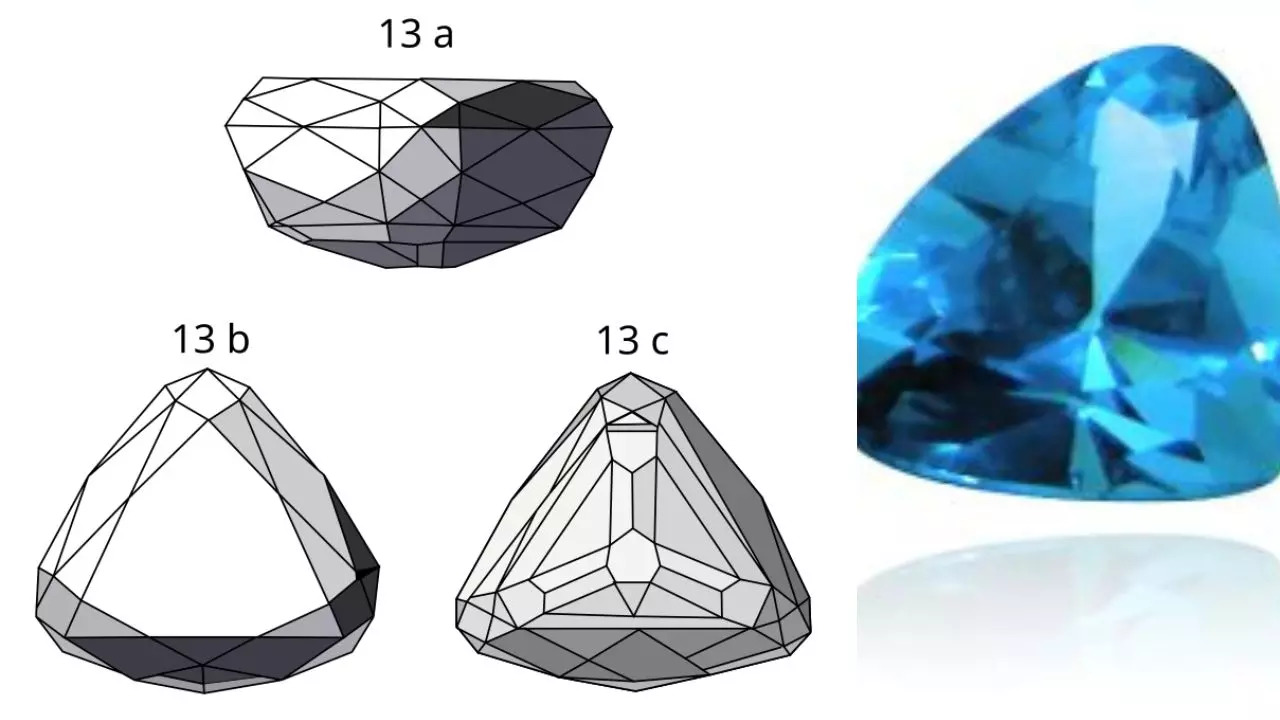(Left) Side view, top view, and bottom view to show drawings of the Nassak Diamond as it appeared between the Rundell and Bridge cut and the 1940 Winston cut; (Right) Replica of the 1820 Rundell and Bridge cut of the Nassak Diamond from the Reich der Kristalle museum in Munich, Germany. (Photo: Wikimedia Commons)
Independence Day It is a harsh reminder that India India was once home to some of the world’s most important, expensive and rare gemstones and jewellery, many of which were looted. These treasures now reside in museums or private collections abroad. For thousands of years, India was the world’s leading producer of high-quality gemstones. diamondsThe Golconda mines produced some of the most famous diamonds, including the Koh-i-Noor, which is now part of the British Crown Jewels, the Darya-i-Nur in Iran and the Prince Diamond.
The Golconda mines also gave us one of the most popular diamonds in the world: Nassak DiamondThe Nassak Blue Diamond was once mounted in the crown of the Hindu deity, Lord Shiva, at the Trimbakeshwar Temple in Nashik, which is one of the 12 Jyotirlingas.
A few years ago, the Trimbakeshwar Devasthan Trust had requested the return of the Nassak Blue Diamond. This diamond, allegedly stolen by various rulers in ancient times, is now kept in a private museum in Lebanon.
The Nassak Blue Diamond, also known as the “Eye” of Lord Shiva, is a large 43.38-carat (8.676 g) diamond that was originally mined as an 89-carat diamond in 15th-century India. It was found in the Kollur mines of Golconda and is considered to be one of the largest diamonds in the world. During the Third Anglo-Maratha War between the Peshwas and the British, the diamond was captured by the British. East India CompanyAkshay Chavan writes for Peepul Tree: “For five months, Peshwa Bajirao II was on the run, with the British in hot pursuit. During this time, he carried his treasure, including the Nassak, with him. In 1818, Bajirao II finally surrendered and handed over the diamond to Colonel J. Briggs, who in turn gave it to the Marquess of Hastings, Governor-General of India. The diamond was sent to London as spoils of the Maratha War and, believe it or not, was put up for sale.”
In 1818, the diamond was sold to jewellers Rundell and Bridge for just £3,000. Since then, the diamond has been listed among the top 20 largest diamonds in the world. The stunning diamond, which originally weighed 89 carats, was recut to 78.62 carats. In 1837, it was sold to one of Britain’s richest men, the Duke of Westminster. Later, it was sold to a New York jeweller, George Mauboussin. Amidst the legal battles Mauboussin waged to keep the diamond, it was also targeted by thieves. In 1933, it was displayed at the World’s Fair in Chicago, USA. The diamond has changed hands many times and is now in the possession of Lebanese billionaire and owner of one of the most dazzling gem collections, Robert Mouawad.
Disclaimer:
The information contained in this post is for general information purposes only. We make no representations or warranties of any kind, express or implied, about the completeness, accuracy, reliability, suitability or availability with respect to the website or the information, products, services, or related graphics contained on the post for any purpose.
We respect the intellectual property rights of content creators. If you are the owner of any material featured on our website and have concerns about its use, please contact us. We are committed to addressing any copyright issues promptly and will remove any material within 2 days of receiving a request from the rightful owner.

